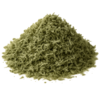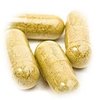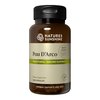Please note that, according to our professional standards of care, we must ensure that our practitioners' only products are safe and suitable for the intended outcome. Therefore we require the submission of a Risk Assesment Form (access HERE ) prior to the supply of herbal extracts. If you are unable or unwilling to reveal personal information, please contact the pharmacy for a chat with a practitioner and an alternative solution.
Usnea 1:2 Herbal Extract in Ethanol and Purified Water
Common Name: Usnea
Botanical Name: Usnea species
Part Used: Thallus
Ratio: 1:2
Percentage of alcohol: 25%
Source: Trade
Usnea is a lichen. A lichen is not really a plant, but is a symbiotic relationship between a fungus and an algae. The inner part of the lichen, known as the cortex, is a filamentous fungus that looks like a thin white thread and stretches like elastic when it gets wet.
The algae is a photobiont, providing photosynthesis for the lichen, while the fungus is a mycobiont, providing water and minerals. Together, they live as a single entity and produce constituents different from those of either original organism. These constituents possess unique antibacterial and anti-fungal properties to protect the lichen from harmful microorganisms.
Lichens have been used in medicine, pharmacy and industry from antiquity to present day in the treatment of various diseases. Interestingly, the word lichen is derived from the Greek “Leikhen - Leprous” and refers to use of lichens in treating skin diseases due to their peeling-skin appearance.
Antibacterial:
Herbalist and director of the North American Institute of Medical Herbalism, Paul Bergner notes that Usnea is “very effective for topical use in the treatment of resistant bacteria, as a douche and for urinary tract infections” Usnea is regarded to have a strong localised antibacterial action and is generally non-systemic in this regard (2).
Anti-fungal:
Usnea is considered a primary anti-fungal phytomedicine among herbalists and many European anti-fungal creams and balms are made from Usnea species . In preclinical studies, Usnea and its constituents have been found to be active against (5, 8, 9): Candida, Malassezia yeasts, Microsporum gypseum, Trichophyton mentagrophytes, Trichophyton rubrum.
In one clinical study, an usnic acid combination was also found to be active against Tinea pedis. During shortterm treatment with the association of a copper salt of usnic acid and of undecilenic acid (another anti-fungal compound), 65 patients (sportsmen) with Tinea pedis exhibited a significant improvement in their clinical condition(7,9).
Antioxidant:
This effect was attributed to the herb’s antioxidant potential as all administered doses were found to activate superoxide dismutase (SOD) and glutathione s-transferase (GST) enzymes and protect against oxidative damage in mucosal cells.
Anti-parasitic:
In preclinical studies, Usnea and its constituents have been found to be active against (10, 11, 12): Leishmania spp, Trypanosoma cruzi, Trichomonas vaginalis.The constituent usnic acid also showed leishmanicidal properties both in vitro and in vivo.
Anti-viral:
Usnic acid has demonstrated anti-viral activity in vitro, exerting its action by inhibiting virus RNA transcription and causing an abolition of viral DNA replication. In preclinical studies, Usnea and its constituents have been found to be active against: Epstein-Barr virus, Herpes simplex virus, Junin virus, Polyomavirus (2,3, 5, 6, 8).
Immunostimulating:
European Usnea preparations have been shown to enhance the resistance to colds and influenza as, besides its strong selective antibacterial activity, Usnea also has the advantage of supporting the natural defences of the body (1, 4).
Caution: Do not use Usnea internally during pregnancy. Furthermore, safety in lactation has not been established, therefore use is not recommended. Contains alcohol.
REFERENCES:
1. Hobbs, C. (1990). Usnea: The Herbal Antibiotic. California, United States of America: Botanica
Press.
2. Buhner, S. H. (2012). Herbal Antibiotics: Natural Alternatives for Treating Drug-Resistant
Bacteria, 2nd edn. Massachusetts, United States of America: Storey Publishing.
3. Campanella, L., Delfini, M., Ercole, P., Iacoangeli, A., & Risuleo, G. (2002). Molecular
characterization and action of usnic acid: a drug that inhibits proliferation of mouse
polyomavirus in vitro and whose main target is RNA transcription. Biochimie, 84(4), 329-334.
4. Weiss, R. F. (2001). Weiss’s Herbal Medicine Classic Edition. Stuttgart, Germany: Thieme.
17. Bothwell, J. (2002). UpS List of Herbs and Analogs. Journal of Medicinal Plant Conservation,
8-9.
5. Perry, N. B., Benn, M. H., Brennan, N. J., Burgess, E. J., Ellis, G., Galloway, D. J., Lorimer, S. D.,
& Tangeny, R. S. (1999). Antimicrobial, antiviral and cytotoxic activity of New Zealand lichens.
Lichenologist, 31(6), 627-636.
6. Cansaran, D., Kahya, D., Yurdakulola, E., Atakol, O. (2006). Identification and Quantitation of
Usnic Acid from the Lichen Usnea Species of Anatolia and Antimicrobial Activity, Zeitschrift für
Naturforschung, 61(11-12), 773-776.
7. Cocchietto, M., Skert, N., Nimis, P. L., & Sava, G. (2002). A review on usnic acid, an interesting
natural compound. Naturwissenschaften, 89(4), 137-146.
8. Molnár, K., & Farkas, E. (2010). Current Results on Biological Activities of Lichen Secondary
Metabolites: a Review. Zeitschrift für Naturforschung, 65(3), 157-173.
9. De Battisti, F., Codolo, R., & Nicolato, A. (1991). Attività di una associazione antibattericoantimicotico
sulla sintomatologia della Tinea pedis in un gruppo di sportivi. Chron Derm, 3, 375-380.
10. De Carvalho, E. A., Andrade, P. P., Silva, N. H., Pereira, E. C., & Figueiredo, R. C. (2005). Effect of
usnic acid from the lichen Cladonia substellata on Trypanosoma cruzi in vitro: an ultrastructural
study. Micron, 36(2), 155-161.
11. Fournet, A., Ferreira, M. E., Rojas de Arias, A., Torres de Ortiz, S., Inchausti, A., Yaluff, G.,
Quilhot, W., Fernandez, E., & Hidalgo, M. E. (1997). Activity of compounds isolated from
Chilean lichens against experimental cutaneous leishmaniasis. Comparative Biochemistry and
Physiology Part C: Pharmacology, Toxicology and Endocrinology, 116(1), 51-54.
12. Wu, J., Zhang, M., Ding, D., Tan, T., & Yan, B. (1995). [Effect of Cladonia alpestris on
Trichomonas vaginalis in vitro]. Zhongguo Ji Sheng Chong Xue Yu Ji Sheng Chong Bing Za Zhi, 13(2), 126-129. [Abstract Only]
 Please select a version. Delivery Estimator is only available for products which can be added to the shopping basket.
Please select a version. Delivery Estimator is only available for products which can be added to the shopping basket.
















